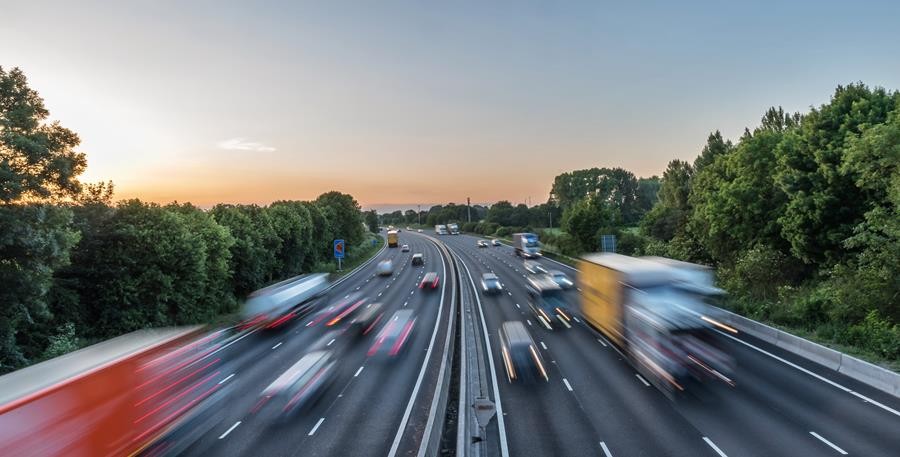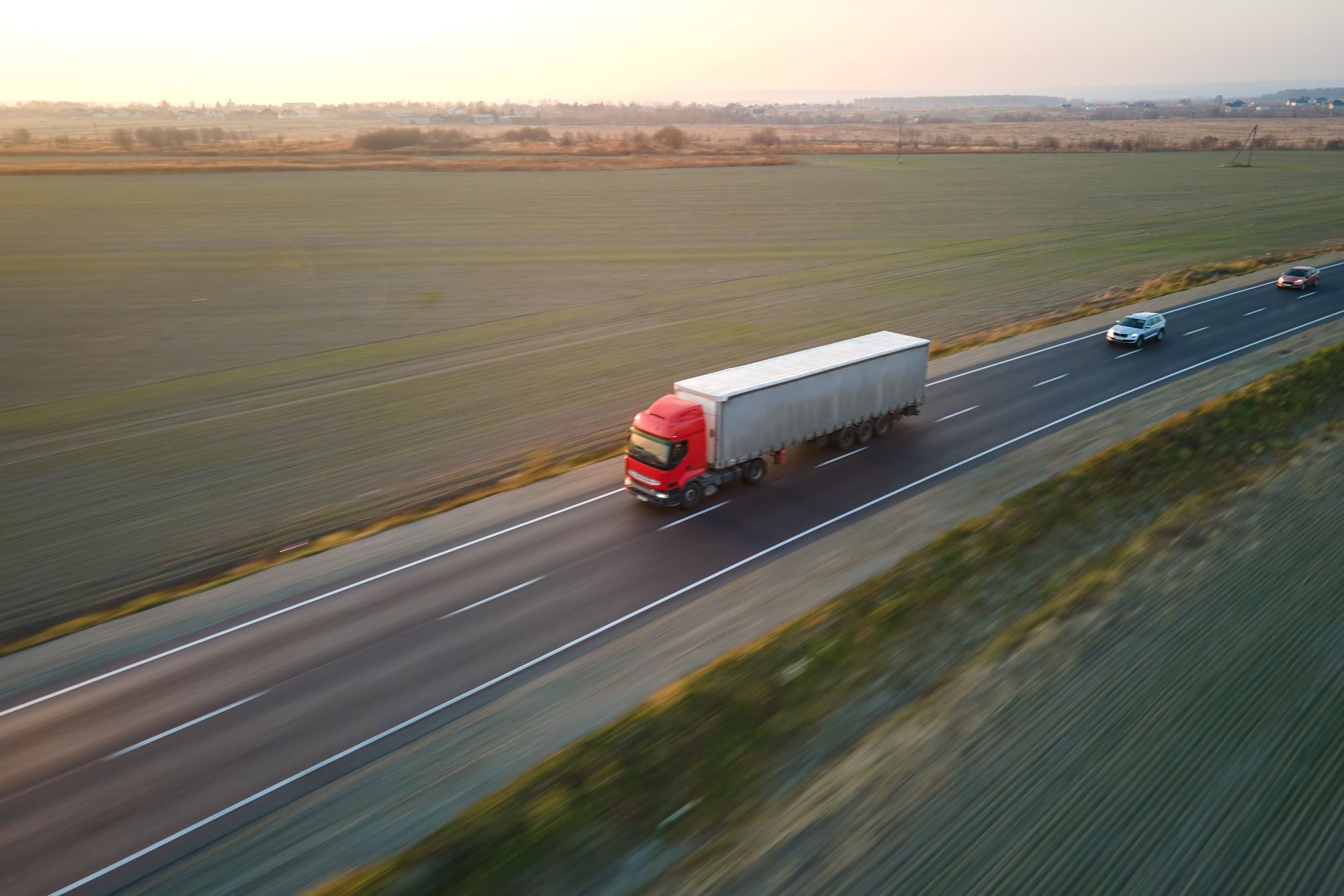
Susie Jones
Der Weg zur Nachhaltigkeit: Die europäische Emissionsherausforderung im Verkehrssektor
Erstellt: 08.08.2024
•
Aktualisiert: 08.08.2024
Aus einem Bericht von Clean Technica aus dem Jahr 2024 geht hervor, dass mehr als 25 % der Straßenverkehrsemissionen in Europa auf den Verkehrssektor entfallen, wobei schwere Nutzfahrzeuge für 85 % der Emissionen verantwortlich sind (der Rest entfällt auf Busse und Reisebusse).
Beim derzeitigen Tempo wird der Verkehrssektor allein fast die Hälfte der europäischen Treibhausgasemissionen im Jahr 2030 ausmachen - die europäischen Verkehrsemissionen haben seit 1990 um mehr als ein Viertel zugenommen. Die Emissionen in der gesamten Wirtschaft sind zurückgegangen - doch seit dem Höchststand im Jahr 2007 hat der Verkehrssektor seinen Kohlendioxidausstoß mehr als dreimal langsamer reduziert (https://www.transportenvironment.org/articles/europes-transport-sector-set-to-make-up-almost-half-of-the-continents-emissions-in-2030) als die übrige Wirtschaft.
Was ist die Ursache für die steigenden CO2-Emissionen im Transportgewerbe?
Seit der Verbreitung des elektronischen Geschäftsverkehrs und der Hauslieferdienste ist die Nachfrage nach mehr Lastwagen auf der Straße erheblich gestiegen. Folglich hat die erhöhte Nachfrage zu einem Anstieg der CO2-Emissionen im Transportgewerbe geführt.
Ein Bericht von [Clean Technica] (https://cleantechnica.com/2024/05/13/eu-wisely-stiffens-road-freight-passenger-emissions-guidance/) über das inländische Frachtaufkommen auf den verschiedenen Verkehrsträgern (Straße, Schiene und Wasser) zeigt, dass der Straßengüterverkehr in Europa im Vergleich zu anderen Regionen (USA und Indien) dominanter ist als der Schienen- und Schiffsverkehr. Obwohl China stärker auf den Straßengüterverkehr angewiesen ist, hat der Bericht ergeben, dass das Land rund 600.000 Elektro-Lkw zur Auslieferung von Waren einsetzt.

Welche Pläne gibt es in Europa zur Reduzierung der CO2-Emissionen?
Das Europäische Parlament hat das [Europäische Klimagesetz] (https://climate.ec.europa.eu/eu-action/european-climate-law_en#:~:text=The%20European%20Climate%20Law%20writes,2030%2C%20compared%20to%201990%20levels.) verabschiedet, um die steigenden CO2-Emissionen zu bekämpfen. Im Rahmen dieses Gesetzes wurde das Ziel der EU, die Netto-Treibhausgasemissionen bis 2030 zu reduzieren, auf mindestens 55 % erhöht, wodurch die Klimaneutralität bis 2050 rechtsverbindlich wird.
Im Mai 2024 haben die EU-Länder ein Gesetz zur Senkung der CO2-Emissionen von Lkw verabschiedet. Das neue Gesetz schreibt vor, dass neue schwere Nutzfahrzeuge, die ab 2040 in der EU verkauft werden, emissionsfrei sein müssen - und erzwingt gleichzeitig eine 90 %ige Senkung der CO2-Emissionen von neuen Lkw bis zum selben Jahr. Die Hersteller müssen eine große Menge an vollständig CO2-freien Lkw verkaufen - zum Beispiel Elektro- und Wasserstofffahrzeuge -, um die verbleibenden Verkäufe von CO-emittierenden Fahrzeugen auszugleichen.
Welche Maßnahmen können Flottenmanager ergreifen, um CO2-Emissionen zu reduzieren?
Fuhrparkmanager können Maßnahmen ergreifen, um ihre CO2-Emissionen zu reduzieren:
Hartes Bremsen, schnelles Beschleunigen und Leerlauf können den Kraftstoffverbrauch und die Treibhausgasemissionen erhöhen - Obwohl die Überwachung des Fahrerverhaltens schwierig sein kann, kann die KI-Technologie Fahrern und Flottenmanagern ein kontinuierliches Feedback geben. Erfahren Sie mehr darüber, wie KI sich positiv auf die Nachhaltigkeit auswirken kann im Transportgewerbe.
Fuhrparks mit älteren Fahrzeugen können auf wasserstoffbehandeltes Pflanzenöl (HVO), Wasserstoff oder elektrisch betriebene Lkw umsteigen, um die Emissionen deutlich zu senken. Flottenmanager müssen jedoch die Reichweite von Fahrzeugen mit alternativen Kraftstoffen und die damit verbundenen Kosten berücksichtigen.
Mit [SNAP Account] (https://snapacc.com/) können Flottenmanager ihre Umwegkilometer reduzieren - mit über 600 Servicepartnern, die SNAP Account-Kunden zur Verfügung stehen, können Flottenmanager Übernachtungsstopps für ihre Fahrer auf der Route planen.
Ist die Infrastruktur vorhanden, um Elektro-LKWs aufzuladen?
Laut einer [PwC-Studie] (https://www.strategyand.pwc.com/de/en/industries/transport/the-dawn-of-electrified-trucking.html) wird bis 2030 ein Drittel aller Lkw in Europa elektrisch betrieben werden. Da Flottenunternehmen Schritte zur Elektrifizierung unternehmen, müssen Lkw-Haltestellen in ganz Europa in der Lage sein, die Nachfrage nach Elektroladestationen zu decken.
Die Bereitstellung der Infrastruktur wird für viele Raststätten und Tankstellen mit Kosten verbunden sein. Diejenigen, die bereits über Ladestationen für Elektroautos verfügen, sind jedoch gut aufgestellt, um von zukünftigen Wellen von Elektro-Lkw zu profitieren. Bis 2030 wird die Zahl der öffentlichen Ladestationen in Europa auf über [3.600] ansteigen (https://www.2win.eu/blog/electric-trucks/) - Die EU hat mit der Verordnung über die Infrastruktur für alternative Kraftstoffe (AFIR) ein ehrgeiziges Gesetz für das Aufladen vorgelegt. Die AFIR sieht vor, das Hauptstraßennetz alle 60 km mit Ladestationen auszustatten, die genügend Ladeenergie und Wasserstoffkapazität bereitstellen, um 9 % der Lkw- und Busflotten bis 2030 emissionsfrei zu machen.
Welches europäische Land hat die meisten CO2-Emissionen?
Im Jahr 2021 waren Deutschland, Frankreich und Italien für die höchsten Gesamttreibhausgasemissionen (THG-Emissionen) verantwortlich - zwischen [375.000 und 740.000 kt CO2] (https://ccpi.org/which-european-countries-are-the-worst-climate-polluters-and-why/). Länder mit einer größeren Bevölkerung produzieren jedoch mehr Treibhausgasemissionen - daher ergibt die Betrachtung der gesamten Treibhausgasemissionen ein verzerrtes Bild.
Ein unvoreingenommener Blick auf die Emissionen zeigt ein anderes Bild: Luxemburg, Irland und die Tschechische Republik hatten im Jahr 2021 die höchsten Pro-Kopf-Emissionen in der EU.
Welches ist die umweltfreundlichste Art, Güter zu transportieren?
Der Gütertransport mit der Bahn ist einer der saubersten Verkehrsträger, bietet aber noch weitere Vorteile:
Verringerung der Staus auf den Straßen, was zur Verbesserung der Luftqualität beiträgt.
Die Schiene bietet einen schnelleren Weg für den Gütertransport und beseitigt schwere Verkehrshindernisse.
Lastkraftwagen mit alternativem Kraftstoff sind eine weitere umweltfreundliche Möglichkeit, Güter zu transportieren. Mit hydriertem Pflanzenöl (HVO) lassen sich im Vergleich zu herkömmlichem Diesel über den gesamten Produktlebenszyklus bis zu 90 % der Treibhausgasemissionen einsparen. Certas Energy HVO steht hinter dem Wechsel zu einer saubereren Alternative und hilft Unternehmen, ihre Nachhaltigkeitsziele zu erreichen und sinnvolle Schritte in Richtung einer Netto-Null-Zukunft zu unternehmen.



